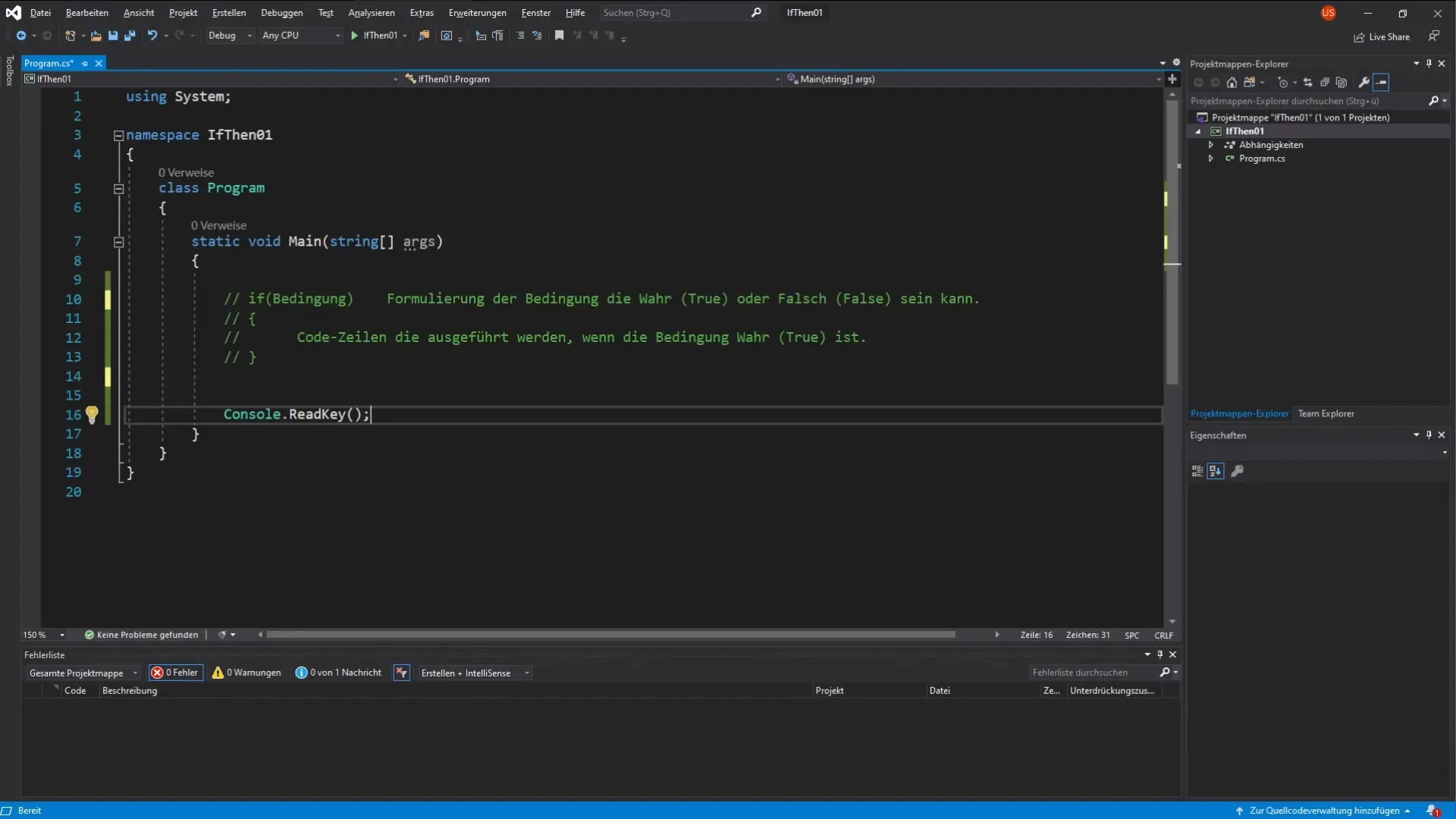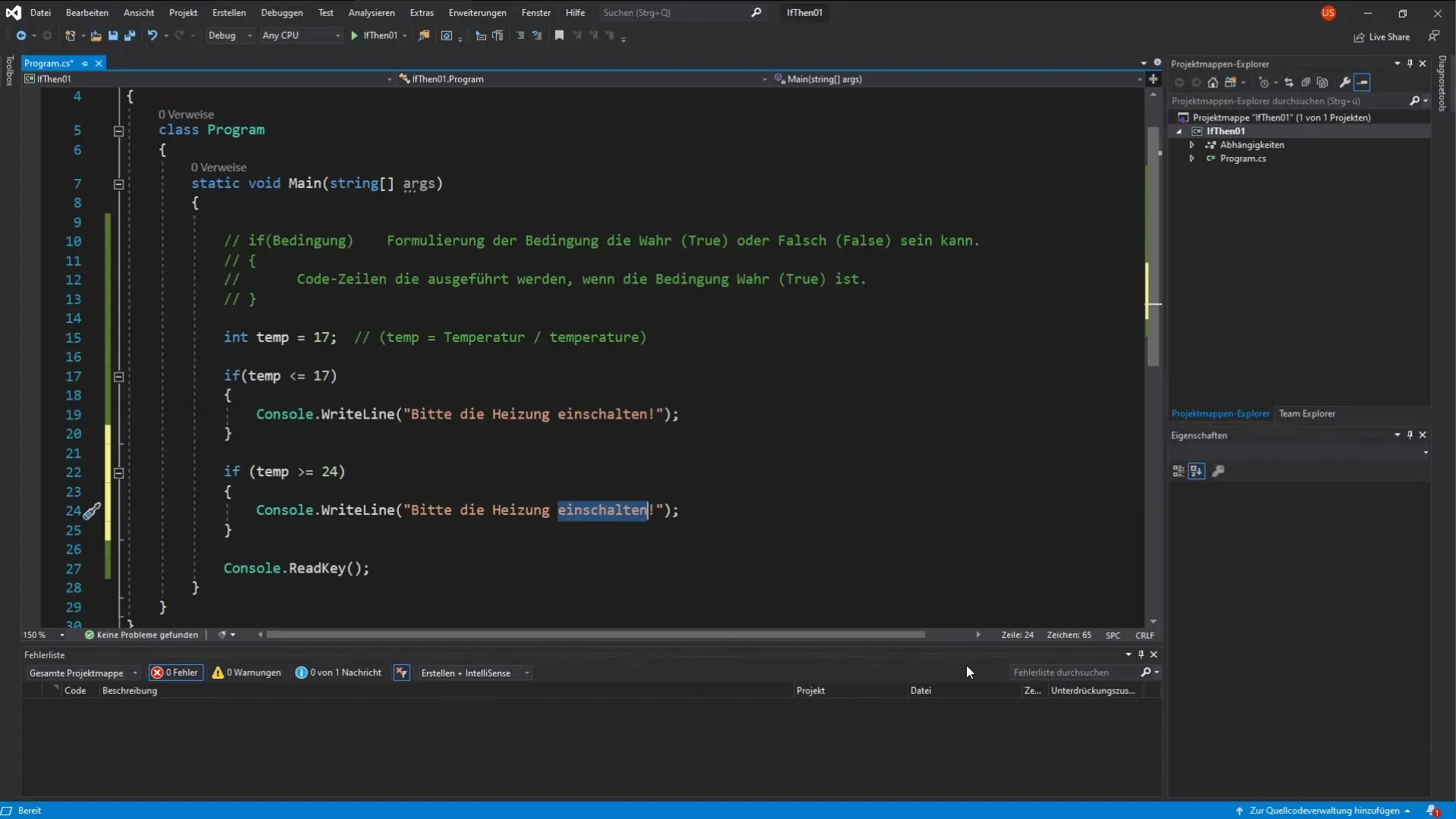In programming, it is often necessary to make decisions to control the behavior of the program according to the inputs and circumstances. Especially in C#, control structures, like the "if" statement, are essential tools that help you respond to different conditions. Here you will learn how to implement simple decisions in your C# programs.
Key insights
- Control structures allow you to respond to input data or specific user behavior.
- The "if" statement is a fundamental control structure in C# that enables you to formulate conditions and respond based on their truth value.
- Combinations of conditions and the use of "else" allow for more complex decision structures.
Step-by-Step Guide to Using "if" Statements
To effectively implement controls with "if" statements, I will walk you through a practical example step by step.
1. Introduction to the "if" Statement
First, it is important to understand what an "if" statement is. This structure allows you to execute a block of code if a specific condition is met.

2. Creating a Simple Condition
To illustrate how it works, let's look at a simple example where we control the heating. First, you define a variable that stores the temperature. In this example, we will name the variable Temp and initialize it with a value.
3. Implementing the First "if" Statement
Now you build the first "if" statement that checks if the temperature is 17 degrees or lower. If this is the case, a message is displayed to turn on the heating.
When you run the code, you should see the output "Please turn on the heating" in the console, as the condition is met.
4. Adding a Second Condition
Now we take a step further and implement a second "if" statement to check if the temperature is 24 degrees or higher. In this case, the heating should be turned off.

5. Testing the Conditions
For testing, we change the temperature to 25 degrees. When executing the code, the console should now display the message "Please turn off the heating," as the condition is met.
6. Optimizing the if Statements
In practice, it is often useful to combine multiple conditions in one "if" statement. Instead of having two separate "if" statements, you can combine the decision with "else if" to simplify and optimize the code.
7. Summarizing the Control Logic
Combining the statements prevents the program flow from slowing down and makes the code clearer. In this example, your program does not require a second statement.
Summary – Effectively Implementing Decisions in C# Programming
By understanding and using "if" statements in C#, you can make specific decisions and make your program more dynamic and user-friendly. You have now learned how to implement simple conditions and how to work with "if" and "else if" to improve the logic of your code.
Frequently Asked Questions
What is an "if" statement?An "if" statement is a control structure that allows you to evaluate a condition and execute a block of code based on that condition.
How do you use "else if" in C#?With "else if," you can specify additional conditions in a control structure that are checked if the previous condition is not met.
Why are control structures important in programming?Control structures allow decisions to be made in the program, making the program's behavior dynamic and reactive.


